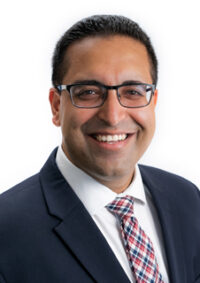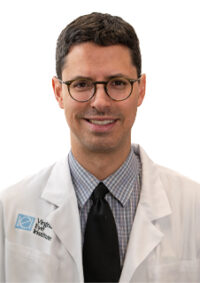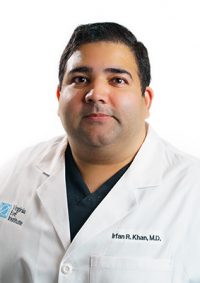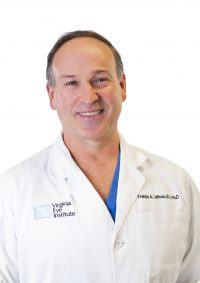
A cataract is a clouding on the lens of the eye that can affect vision. Cataract removal surgery should be considered when cataracts interfere with your vision so drastically, that every-day life activities become challenging. Aside from some symptoms that may develop, such as clouded, blurry or dim vision, sensitivity to light, or colors that appear faded or yellowed, undergoing a dilated eye exam is the only positive way to diagnose a cataract. A dilated eye exam must be performed by a qualified eye professional, such as the doctors at Virginia Eye Institute.
Our cataract specialists have been providing cataract surgeries to patients across Richmond & Central Virginia for decades and are up-to-date on all of the latest cataract surgery methods & technologies. In fact, our practice has provided ophthalmic surgeries to over 200,000 cataract patients and counting. Don’t let cataracts ruin you or your loved ones’ daily lifestyles, come see us for an evaluation to see if you’re a candidate for surgery today.
Do you think that you’re a candidate for cataract surgery? Click here to take our Cataract Self-Test
Schedule an Appointment With Us Today or Learn More About Our Premium Lens Options
A Quick Procedure
Once you’ve opted for surgical cataract treatment and correction, your VEI ophthalmologist will help you choose the intraocular lens (IOL) implant that is right for you. You can watch informational videos about some of our premium lens options here. Through a brief outpatient procedure, your doctor will remove your cataract and replace it with a clear implant to restore your vision. Recovery is typically rapid, allowing you to resume normal activity within a week or less.
What are Cataracts?
A cataract is the clouding of the normally clear, natural crystalline lens of the eye. The lens is composed of water and protein. The protein is arranged in a highly organized pattern that allows light to pass through it with minimal distortion. As a result, the lens appears virtually clear. The lens can become cloudy (see Causes of Cataracts), blocking or scattering some light and preventing it from reaching the retina in sharp focus. This causes blurred vision and glare.
Most cataracts progress slowly over a period of years, but their rate of progression is unpredictable. They can affect one eye or both eyes. As cataracts become denser, they produce visual symptoms; these typically include blur, glare, halos around lights, and double vision. Colors can become dull, a brown-yellow tint is common, and driving can become dangerous. Untreated, cataracts can cause blindness. In the U.S., however, cataracts are usually treated when they begin to interfere with activities of daily living such as reading and driving.
What Causes Cataracts?
Age: Most Americans older than 60 years have cataracts.
Medical Conditions: Diabetes and other systemic diseases, glaucoma, and metabolic abnormalities can cause cataracts.
Physical Injuries: Commonly called traumatic cataracts. A blow to the eye, great heat or cold, chemical injury, exposure to radiation (usually associated with radiation therapy for cancer patients), and other injuries can lead to cataract formation.
Ultraviolet Radiation (UVA or UVB): Long-term exposure to sunlight is believed to speed the development of cataracts.
Oral Steroids & Other Medications: Oral steroids (such as prednisone), the gout medication allopurinol, the breast cancer drug tamoxifen, the heart medication amiodorone, and the long-term use of aspirin have also been associated with cataracts.
Smoking: Studies indicate that smokers are twice as likely to develop cataracts than nonsmokers and that quitting can reduce the risk for developing cataracts.
How are Cataracts Treated?
Phacoemulsification
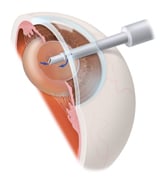
Many people falsely believe that cataract surgery is typically performed with a laser. In fact, this is one of the most common misperceptions in medicine. The most common and advanced cataract surgery technique is phacoemulsification or “phaco.” The surgeon first makes a small incision at the edge of the cornea and then creates an opening in the membrane that surrounds the cataractous lens. This thin membrane is called the capsule. Next, a small ultrasonic probe is inserted through the opening in the cornea and capsule. The probe’s vibrating tip breaks up or “emulsifies” the cloudy lens into tiny fragments that are suctioned out of the capsule by an attachment on the probe tip. After the lens is completely removed, the probe is withdrawn leaving only the clear (now empty) bag-like capsule, which will act as support for the intraocular lens (IOL).
Phacoemulsification allows cataract surgery to be performed through a very small incision in the cornea. Stitches are seldom needed to close this tiny entry, which means that there is less discomfort and quicker recovery of vision than with other surgical techniques. Small incisions do not change the curvature of the cornea like larger ones that were required with older surgical techniques. This allows for more rapid rehabilitation of vision and possibly less dependence on glasses for good distance vision.
After removal of the cataract-damaged lens, an artificial intraocular lens (IOL) is implanted. It is made from soft acrylic or solid medical-grade silicone. IOLs are folded so they can be implanted with a small injector, which uses the same incision through which the phaco probe was inserted at the beginning of the procedure. As the IOL is implanted, it unfolds and anchors itself behind the eye’s pupil over the remaining clear capsule. The IOL to be implanted is selected based on measurements made before surgery.
Laser Assisted Cataract Surgery
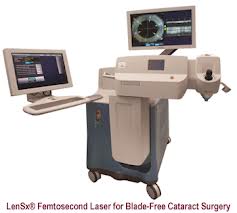
Prior to the introduction of this laser, traditional cataract surgery involved the creation of several small incisions made manually with a blade. Now, a LenSx femtosecond laser has the ability to create those incisions, which provides you with a more precise and accurate procedure than manual cataract removal. The LenSx laser is an advanced, computerized technology that operates with extreme accuracy, helping to customize your cataract procedure to your unique vision needs.
To find out more about Laser-Assisted Cataract Surgery, please call 804-287-2020.
Virginia This Morning Interview
Click the link below to watch Dr. Bundy’s interview on Virginia This Morning where he discusses aging and the benefits of cataract surgery.

